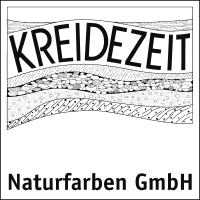The Kreidezeit motives are selected in such a way that they can be set into the surface. If the motives are to be attached on a height, it is favorable to mark the baseline with weakly adhering adhesive tape (e.g. the violet of stork). During stenciling, the stencil is also fixed with weakly adhesive tape.
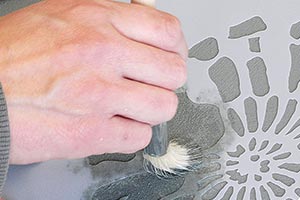 Pasty inks are easier to apply for stenciling than low-viscosity inks. Very pictorial effects are achieved if the motif is not completely opaque, so that the background partially shines through. Paints are dabbed on with stenciling brushes or ring brushes – do not brush on.
Pasty inks are easier to apply for stenciling than low-viscosity inks. Very pictorial effects are achieved if the motif is not completely opaque, so that the background partially shines through. Paints are dabbed on with stenciling brushes or ring brushes – do not brush on.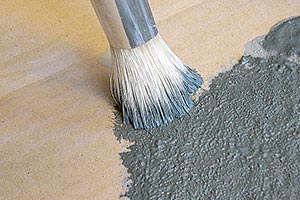 It is particularly important that there is very little paint on the brush. Otherwise the contours become blurred because the ink runs under the stencil. It is helpful to dip the brush only slightly and to dab it off on a slightly absorbent surface, e.g. cardboard.
It is particularly important that there is very little paint on the brush. Otherwise the contours become blurred because the ink runs under the stencil. It is helpful to dip the brush only slightly and to dab it off on a slightly absorbent surface, e.g. cardboard.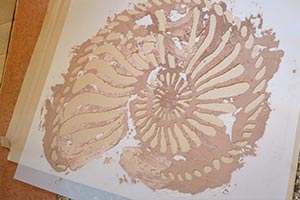 Use warm water and a soft brush or brush on a level surface to clean the stencil for water-based paints and plasters. For oily products, dab with a dry cloth and allow to dry. Heat and strong solvents damage the stencil.
Use warm water and a soft brush or brush on a level surface to clean the stencil for water-based paints and plasters. For oily products, dab with a dry cloth and allow to dry. Heat and strong solvents damage the stencil.< Stenciling with putty is very nice. For spatula work, work is carried out with a small Venetian trowel or Japanese trowel with little pressure.
Stenciling with putty is very nice. For spatula work, work is carried out with a small Venetian trowel or Japanese trowel with little pressure.
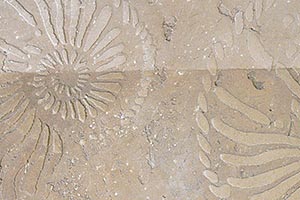 Stenciling with putty is very nice. For spatula work, work is carried out with a small Venetian trowel or Japanese trowel with little pressure.
Stenciling with putty is very nice. For spatula work, work is carried out with a small Venetian trowel or Japanese trowel with little pressure.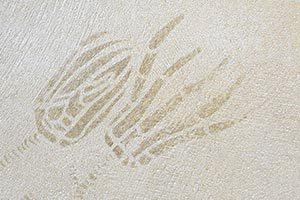 Lime paint with wall glaze binder
Lime paint with wall glaze binder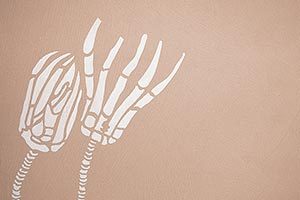 Lime paint
Lime paint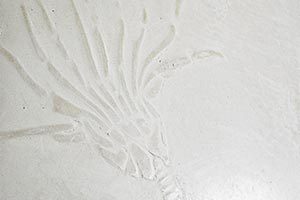 Stuccolustro
Stuccolustro